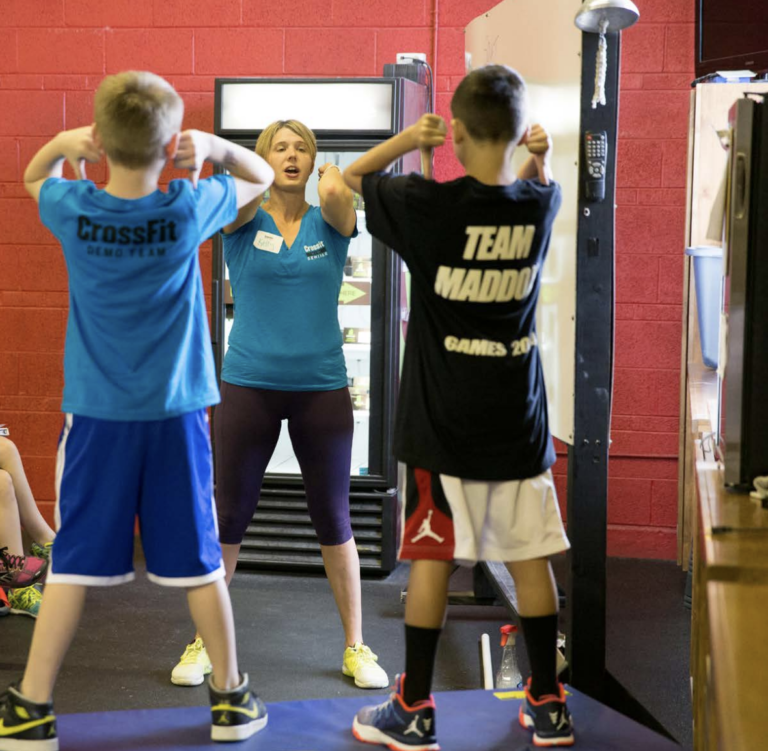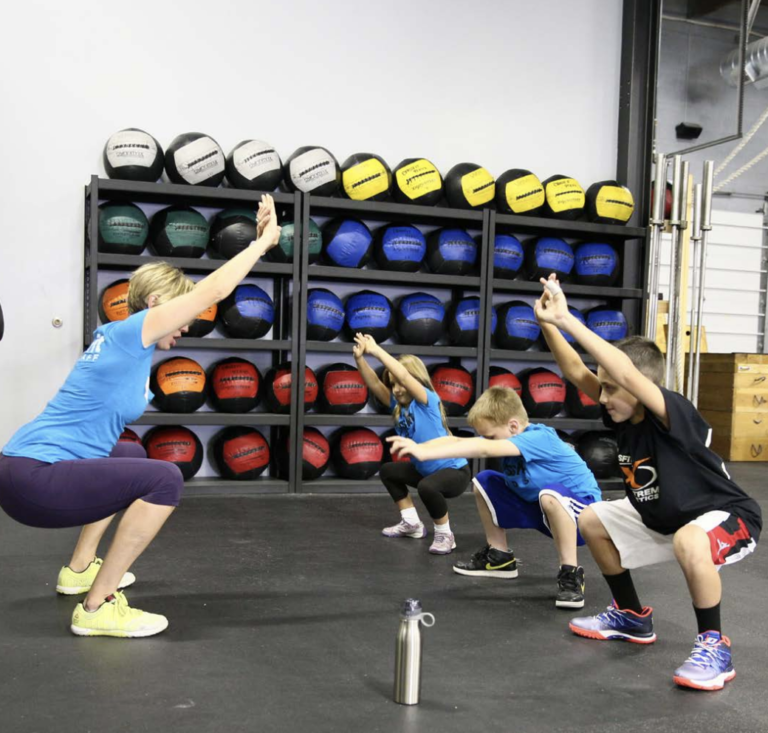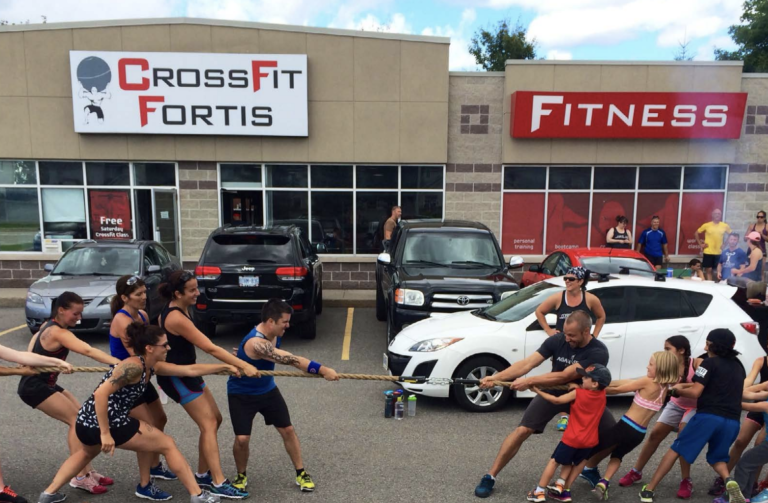When my daughter, Rosemary, lost interest in soccer at age 8, I signed her up for the swim team.
“She loves the water,” I reasoned. “This will be a perfect sport for her.”
Rosemary practiced twice a week on and off for two years. Whenever I asked her about competing in a swim meet, she said she wasn’t interested.
Then, when she was almost 10, she tried out for Junior Lifeguards and came in first of all her friends in the 100-yard swim. Her hours of practice had turned her into a strong, effective swimmer.
“Rosemary,” I said, excited to see her hard work paying off, “you should try a swim meet! You’d do so well!”
“No thank you,” she said.
We went around this merry-go-round many times over the summer. She happily went to her 75-minute swim practice but was steadfast in her refusal to compete. I was equally determined to have her try at least one swim meet in the fall of fifth grade. Everyone around her was competing in his or her chosen sport. Shouldn’t she?
Not necessarily said Todd Widman, head flowmaster for CrossFit Kids.
“I think we are doing kids a disservice by forcing them into the competition mode,” Widman said. “If they want to do soccer practices and not the games, awesome. To me that shows a maturity level in a child well beyond anything that I ever had as a child.”
Raising a child in the United States today means entering a world of competition that starts at an early age, and competition and team sports offer kids many positive lessons about teamwork, persistence and improving through practice, all while getting exercise and gaining physical skills.
There are equally powerful negative consequences of pushing kids to compete and specialize in a particular sport at a young age, including burnout, overuse injuries, and unbalanced muscle development, to name a few.
CrossFit Kids is designed to improve the general physical preparedness (GPP) of young people and set them up for a lifetime of fitness. The program is about broad, general, inclusive fitness, and making fitness fun is a major focus. Overuse injuries due to early specialization and competitive burnout that eliminates fun are obviously anathema.
Fitness First
Widman said there were two possible outcomes of forcing my daughter to compete.
The best case would be she discovered she liked competitive swimming. “The worst case is what if she doesn’t like it?” Widman asked.
“Now it ruins the whole thing and potentially her relationship with you. ‘My mom doesn’t trust my decision. Mom doesn’t listen to my words, so with my actions I have to show her,’” he said.

Photo by Colleen Baz
Widman started CrossFit in 2005 when he was an officer in the U.S. Marine Corps. He began working for CrossFit, Inc. in 2006 and got involved in CrossFit Kids in 2008. He said he strongly believes children are competing and specializing in sports too early.
“A growing human being needs to have GPP,” Widman said. “They need to have the ability to jump and roll and tumble and pull and push, and it all has to be fun. With the base of GPP, absolutely you can start specializing in junior year of high school, maybe senior year of high school. Then it’s a choice.”
Widman teaches CrossFit Kids in a nonprofit arrangement out of his garage in Puyallup, Washington. He works with a 14-year-old girl who has been doing CrossFit Kids since she was in elementary school. An exceptional athlete, she’s progressed to the highest levels of competitive soccer. She plays year round and tries to fit in CrossFit Kids classes when she can.
Widman said he’s concerned by what he sees when she shows up to his garage.
“She’s always finding herself injured, she’s always tweaked, and she’s always sick,” he said.
“‘This is your body overtraining,’” he said he told her. “You should not have knee problems at 14 — (it’s) horrific and inappropriate.”
Jon Gary is another flowmaster for CrossFit Kids. He’s been doing CrossFit since 2003 and has been a part of CrossFit Kids since its inception. Gary received a bachelor’s degree in biology from Northwestern University and a doctorate in molecular biology from UCLA.
Like Widman, Gary thinks children should be allowed to develop a variety of physical skills before specializing in one sport. Working on the foundational movements will ultimately make children better at the sport of choice once they specialize.
“If you can’t squat, if you can’t explosively open your hips, if can’t do core-to-extremity (movement) … you’re not fulfilling your potential in the outlet of that, which is sport,” Gary said.
Learning to handle the psychological side of competing is another concern for Gary. One child might thrive at a baseball game hitting in front of his parents, coach, and teammates. Others might shrink from the attention and learn to dread the experience.

Photo by Colleen Baz
Gary said CrossFit Kids is a safe platform for children to experience success and failure. He said when he sees 7-year-olds playing competitive baseball with playoffs, he thinks they would be just as well served by having a great time on the playground with their friends.
“My view on competition changes in the teenage years,” he said. “Teens get it. If you’ve led them up to that path in their childhood years, they are very able to turn successes and failures into positive things.”
He continued: “I absolutely believe in learning about winning and losing and about failing and succeeding, but not if it’s going to take away from the desire to continue to do the thing. That to me is what differentiates a sport from, say, what we do in CrossFit Kids.”
Competitive Delay
Kelly Brown, owner of CrossFit Agoge in Montrose, Colorado, started her CrossFit Kids program in 2008. She said she sees three types of kids in her program: homeschooled children who use CrossFit Kids as P.E., kids who use the program as a supplement to their sports, and children who are not interested in sports and need movement in their lives.
Competition isn’t unhealthy by nature, but it’s not the focus for young athletes in CrossFit Kids.
“It’s just us doing our thing in class. There’s no win or loss,” Brown said. “There (are) little (competitions) throughout the class, but there’s no ‘you’re on the winning team or the losing team.’”
The 2001 statement paper “Organized Sports for Children and Preadolescents” examined the pressures sports place on children.

Photo by Daniel Baribeau
“Tournaments, all-star teams, most valuable player awards, trophies, and awards banquets are by-products of adult influences. Despite good intentions, increased involvement of adults does not necessarily enhance the child athlete’s enjoyment,” stated the paper, which was published in “Pediatrics,” the official journal of the American Academy of Pediatrics.
The paper detailed how organized sports must have reasonable goals for children and preadolescents, including acquisition of basic motor skills, increasing physical activity, learning about social skills and sportsmanship, and having fun.
In the end, I realized my desire to have my daughter compete in a swim meet was more about my competitive drive than hers. The situation reminded me of being at the airport with checked bags and a seat assignment in my hand but still feeling anxious about getting a good spot in line at the gate. It was a knee-jerk reaction — competition without purpose.
When I told Rosemary about my conversation with Widman and how I wasn’t going to force her to compete, she smiled.
“Thank you, Mommy,” she said.
About the Author
Hilary Achauer is a freelance writer and editor specializing in health and wellness content.
Child's Play